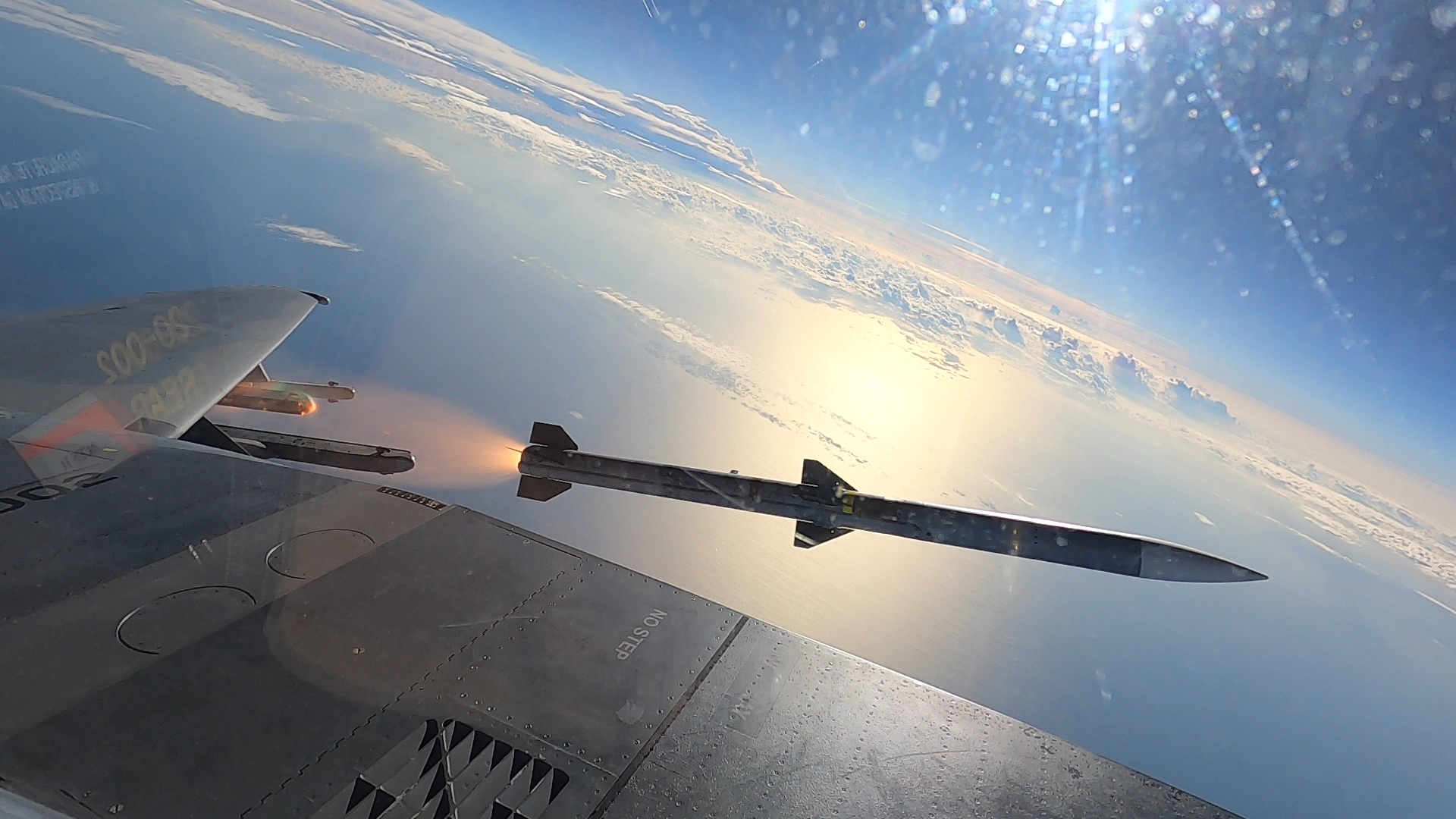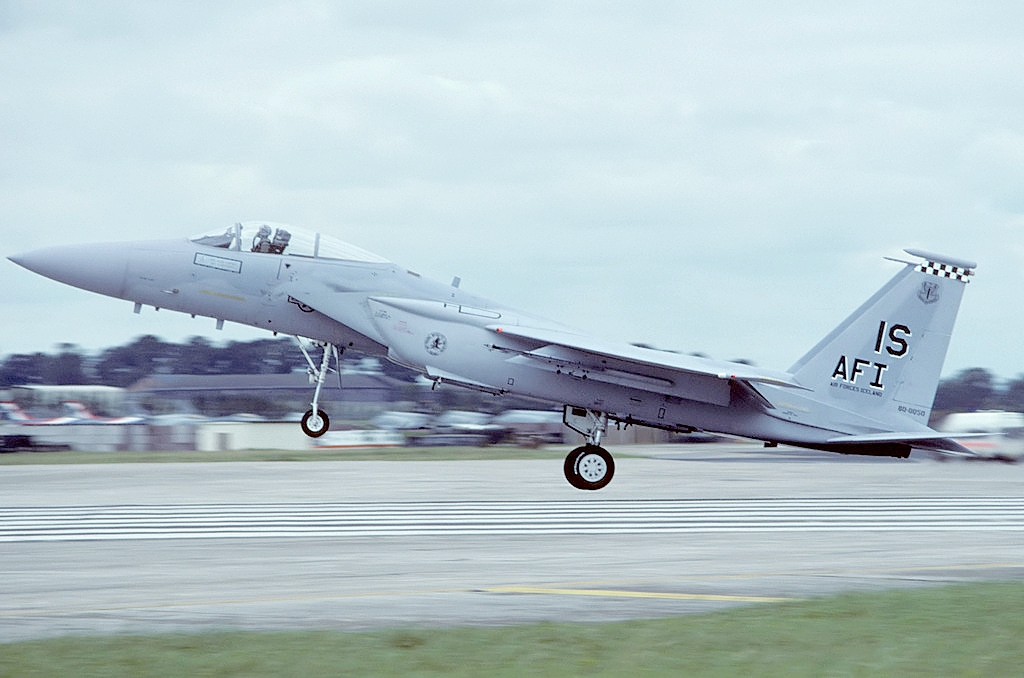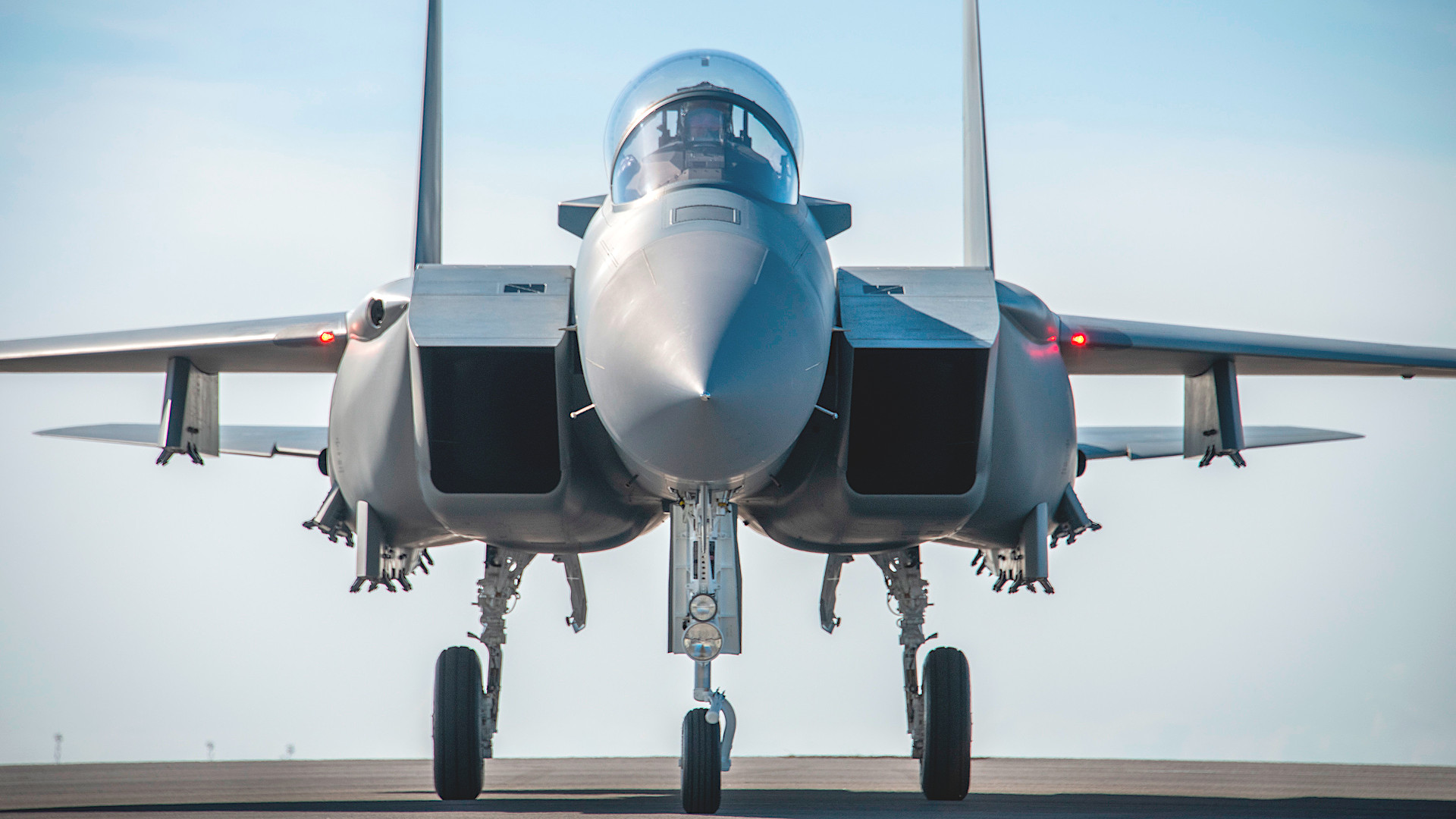The U.S. Air Force’s first operational F-15EX Eagle II fighters will not be equipped with conformal fuel tanks, or CFTs, according to a newly released Pentagon report. A lack of CFTs will significantly reduce the F-15EX’s range, which has been a major selling point for the type in the past.
Mention of the CFT decision was included in the most recent annual report from the Pentagon’s Office of the Director of Operational Test and Evaluation, or DOT&E, which was released yesterday. The full report provides an overview of test and evaluation activities pursuant to a number of major programs during the 2022 Fiscal Year, which ended on September 30 of last year.

“Following the initial portion of Phase 1 testing, the Air Force’s Air Combat Command clarified that the aircraft configuration for the first operational F-15EX units will not include conformal fuel tanks (CFT),” according to the new DOT&E report. “While the initial Phase 1 testing was done with CFTs, it is likely that the test data produced will still be representative of the production aircraft equipped with two external tanks, as now planned.”
The report does not say why Air Combat Command (ACC) decided on this configuration for the first operational units to be equipped with F-15EX. The War Zone has reached out for additional information. Two external underwing drop tanks are part of the standard loadout for the Air Force’s current fleet of F-15C Eagle fighters, at least a portion of which the Eagle IIs are slated to replace.

At present, the Air Force has two F-15EXs, both equipped with CFTs. The Air Force is employing one for developmental testing, while it is using the other for simultaneous operational test and evaluation work.
The service also uses the same kind of CFTs on its F-15E Strike Eagles. CFTs have been an option for F-15-series jets since the 1970s and the Israeli Air Force was a pioneer in their use, transforming fighters into long-range strike platforms, as you can read more about here.
“The lack of CFTs will limit the number of external pods and air-to-ground weapons the F-15EX will be able to employ,” the DOT&E’s latest annual report adds. “Until CFTs are procured and provisioned, F-15EX’s air-to-ground capabilities will be very limited.”
This is certainly true. As F-15Es routinely demonstrate, in addition to extra fuel, each CFT can be fitted with up to six pylons that can carry various air-to-ground missiles, precision-guided bombs, and other stores.

However, air-to-ground operations are a decidedly secondary concern for the F-15EX, at least based on the expected mission sets that the Air Force has laid for the Eagle II to date. “Units equipped with the F-15EX will provide offensive counter-air, cruise-missile defense, and defensive counter-air capabilities, including escort of high-value airborne assets,” DOT&E’s report notes.
What is not mentioned specifically in the report is that a lack of CFTs will have impacts on the F-15EX in its air-to-air combat roles, as well. Each one of these tanks can carry around 750 gallons of additional fuel, compared to the 600-gallon external drop tanks that the Air Force’s F-15Cs currently rely on. While F-15EX’s exact fuel capacity is not immediately unclear, based on available data for the F-15E, a pair of CFTs should nearly double how much gas it can carry internally.
On top of that, the drop tanks make the jets much draggier, further reducing their fuel economy and, as a result, range. If required, F-15EXs could still carry those drop tanks, in addition to an impressive loadout of weapons and other stores, further increasing their unrefueled reach.
For instance, one loadout option for the F-15EX is two CFTs, two 600-gallon drop tanks, and 12 AIM-120 Advanced Medium-Range Air-to-Air Missiles (AMRAAM). This is also made possible by two additional underwing weapon stations on the Eagle II, known as Stations 1 and 9, that are not found on the F-15C or F-15E. This is made possible by an advanced “fly-by-wire” flight control system that was first seen on Saudi Arabia’s F-15SA Advanced Eagles and then also featured on the F-15QA variant for Qatar. The F-15EX is derived from the F-15QA.

The Air Force and the F-15EX’s manufacturer, Boeing, have both heavily touted its range and stores-carrying capabilities as key features of the design. This could all be particularly valuable for operations across the vast expanses of the Pacific, including during any future high-end conflict in the region against China. The U.S. military, as a whole, has long been concerned about aerial refueling demands outstripping capacity in such a scenario.
In addition, these attributes have also been cited specifically as why the non-stealthy Eagle II is a valuable complement to the smaller, shorter-legged combat jets, especially fifth-generation stealth fighters like the F-22 Raptor. The War Zone was the first to report in-depth on the F-15EX, which was known initially just as the F-15X, in-depth, and has regularly highlighted the benefits of having this capability mix.
It is worth noting that CFTs do affect the overall speed and maneuverability of F-15s fitted with them. While this is also true of drop tanks, they can be jettisoned in flight to offer an immediate boost in performance in this regard, CFTs cannot. The War Zone has talked to F-15C/D pilots that have noted they like the ability to instantly optimize the jet for air-to-air combat and CFTs cannot offer that, although their performance penalty is not highly detrimental.
A limited number of Air Force F-15C/Ds did fly with CFTs during the twilight of the Cold War and its immediate aftermath. These CFT-equipped eagles primarily flew from bases in Alaska and Iceland where they regularly conducted long-range patrols and quick-reaction alert (QRA) missions.

There had been a proposal more recently to add CFTs to those jets on a wider-scale basis, but this plan was dropped once it became clear the F-15C/D would be retired.
The Air National Guard (ANG) had argued that “conformal fuel tanks (CFT) and additional weapons stations” on its existing F-15Cs would “effectively increase the combat radius, loiter time, and firepower critical to gathering offensive mass in order to achieve air dominance.”

Units within the ANG are now expected to be the first users of the F-15EX. The Air Force has previously said that the Oregon ANG’s 173rd Fighter Wing will be the first unit equipped with new Eagle IIs, starting in Fiscal Year 2024, and will act as the Formal Training Unit for the type. The 142nd Fighter Wing, also part of the Oregon ANG, is then slated to become the first operational unit with these jets in the 2025 Fiscal Year.
For these units, which are generally tasked to perform shorter training missions or homeland defense sorties where tanker support is more or less guaranteed, the CFTs may not necessarily be seen as being worth the tradeoffs in performance. But not having them could still be a major loss for missions against peer state adversaries and other contingencies abroad. CFTs could also introduce new maintenance and logistics requirements. This would include just the added time and effort needed to install and ‘drop’ them for various reasons, such as to gain access to portions of the airframe that are obscured when they are fitted.
All this being said, there is of course always the possibility that CFTs could be added to F-15EXs after they enter operational service, or at least distributed to units for installation as required.
At the same time, DOT&E’s disclosure of ACC’s decision to nix CFTs on at least the initial batch of operational F-15EXs comes amid growing uncertainty surrounding the entire program. The Air Force revealed last year its Eagle II acquisition plans had dramatically shrunk, with the total expected purchases dropping from no less than 144 of these jets down to just 80.

Since then, Secretary of the Air Force Frank Kendall has alluded to replacing some F-15Cs with dramatically different capabilities, including potentially turning Eagle-equipped fighter squadrons into entirely non-flying units. The service has also moved ahead with plans to withdraw active-duty F-15C units from the United Kingdom and Japan, in the latter case without having publicly identified a permanent replacement plan.
As it stands now, by the end of the 2023 Fiscal Year, the service expects to receive six more Eagle IIs and has another 24 of the jets on order.
“Each year the department reassesses its procurement plan and includes an updated number in the budget. I won’t have any additional information until the [Fiscal Year 2024 President’s Budget proposal] is released,” Air Force Spokesperson Ann Stefanek told The War Zone earlier this week in response to questions about whether the F-15EX acquisition plans may have changed again since last year. The President’s Budget proposal for the 2024 Fiscal Year, which includes the proposed defense budget for that fiscal cycle, should come out sometime this spring.
All told, it very much remains to be seen how the Air Force will proceed with any eventual plans to integrate CFTs onto some or all of its F-15EXs, or not, and with the Eagle II program as a whole.
Updated 1/25/2023:
The U.S. Air Force has now provided additional information about conformal fuel tanks (CFT) for the F-15EX.
“The F-15EX program as funded from FY20-FY23 is a direct replacement for the F-15C/D in the air-to-air and homeland defense role,” U.S. Air Force Maj. Alli Stormer, a service spokesperson, told The War Zone in a statement. “The F-15C/D does not typically operate with CFTs, and the first operational F-15EX aircraft do not have CFTs funded.”
“The DAF [Department of the Air Force] is exploring options to resource a number of advanced capabilities for the F-15EX fleet, including both new and refurbished CFTs, in current and future budget submissions,” she added.
Contact the author: joe@thedrive.com
